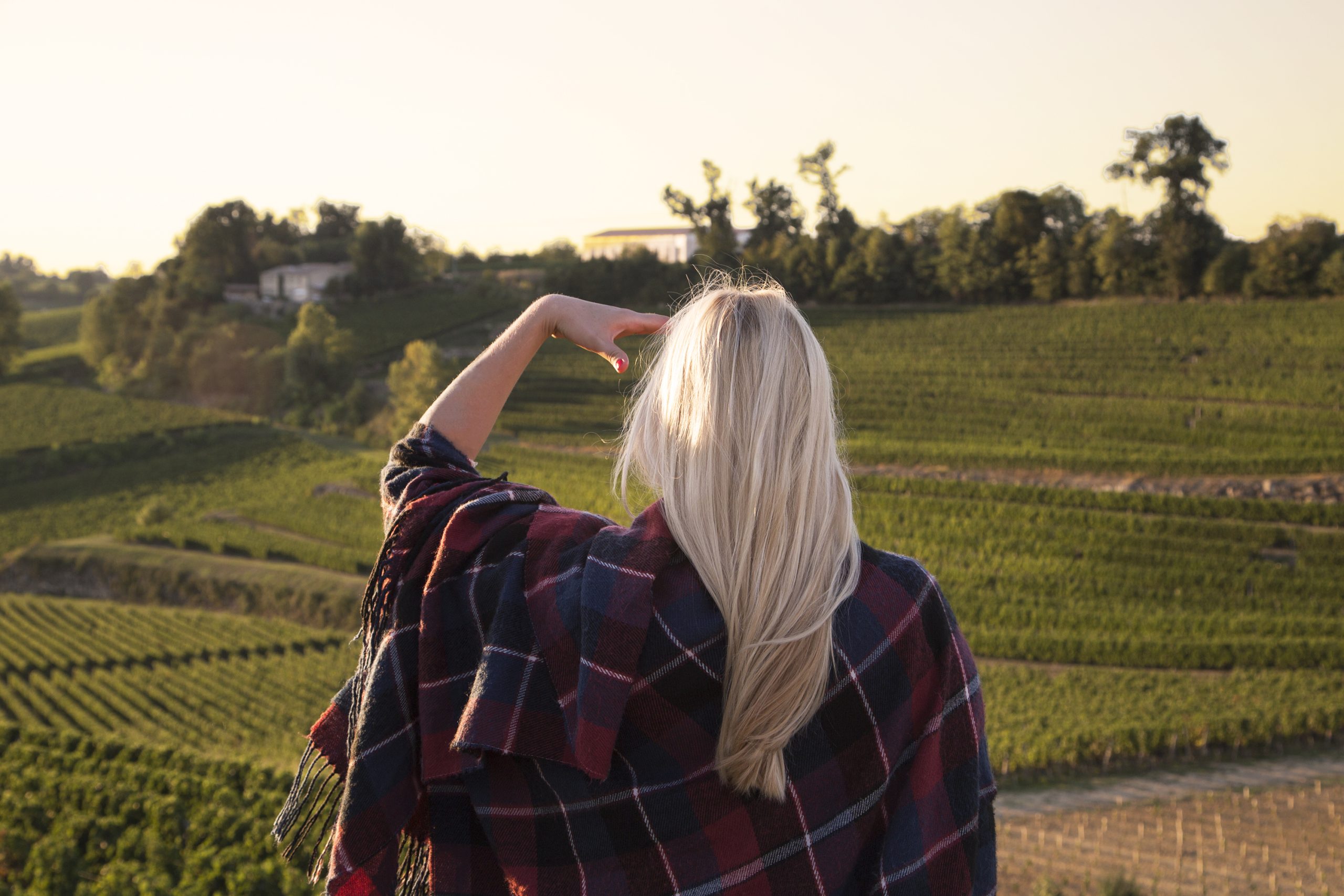Photo Source: CIVB
Understanding the region of Bordeaux may seem like a feat, but it’s as simple as knowing left from right—almost. If you’re unsure where to start, we recommend reading this blog about Bordeaux’s geography and grape varieties to refresh your memory.
The Basics
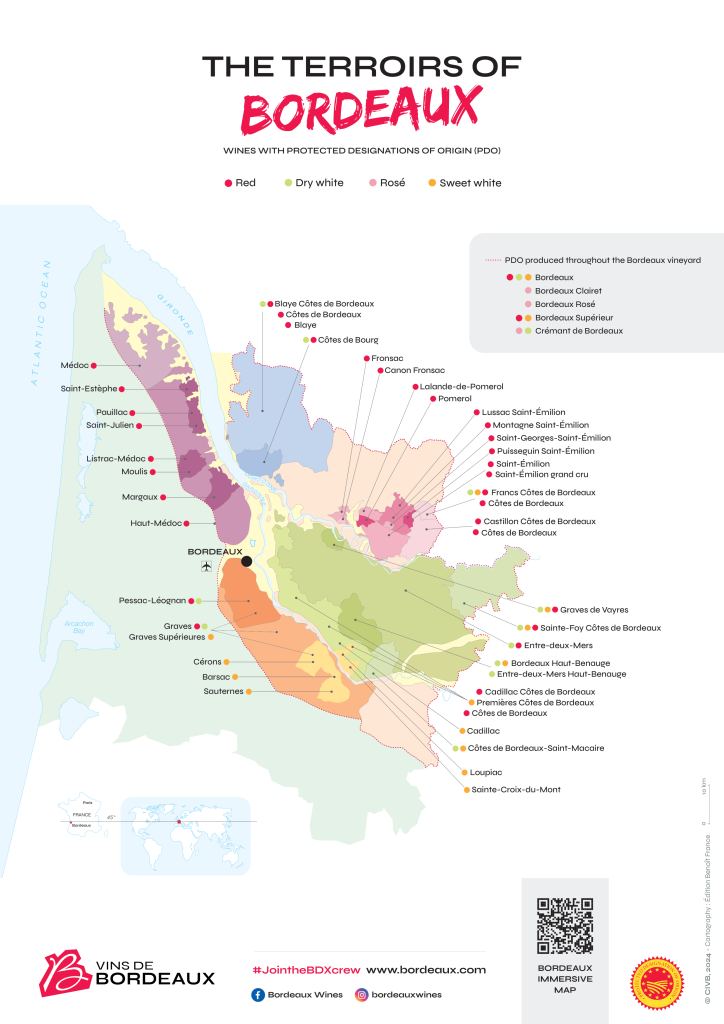
Bordeaux’s largest winemaking “region” is named just that: Bordeaux. Consider this an umbrella term for wines made throughout Bordeaux with looser restrictions on production requirements and style. The appellation is large, with soils ranging from clay and limestone to gravel. This appellation represents more than half of all wines from Bordeaux, including whites, sparkling, rosé and reds. The term “Bordeaux A.O.C.” represents wines that are entry-level, while “Bordeaux Supérieur” wines are a step above and made from a slightly smaller area within the bounds of the Bordeaux region.
All other wines come from distinct subregions with specific regulations, like Entre-Deux-Mers. Named “between two seas” thanks to its location between the rivers Garonne and Dordogne, Entre-Deux-Mers is best known for its dry Sauvignon Blanc—both in varietal wines and in blends—and Merlot-based dry reds, though it also produces delicious sweet white wines.
Great wines are produced throughout all of Bordeaux, but smaller appellations can indicate more rigorous production standards and a unique terroir. Learn more about Bordeaux’s Left and Right Banks—named for which sides of the rivers they are situated on—as well as some of the most well-known sub-appellations and the wines for which they’re best known:
Left Bank
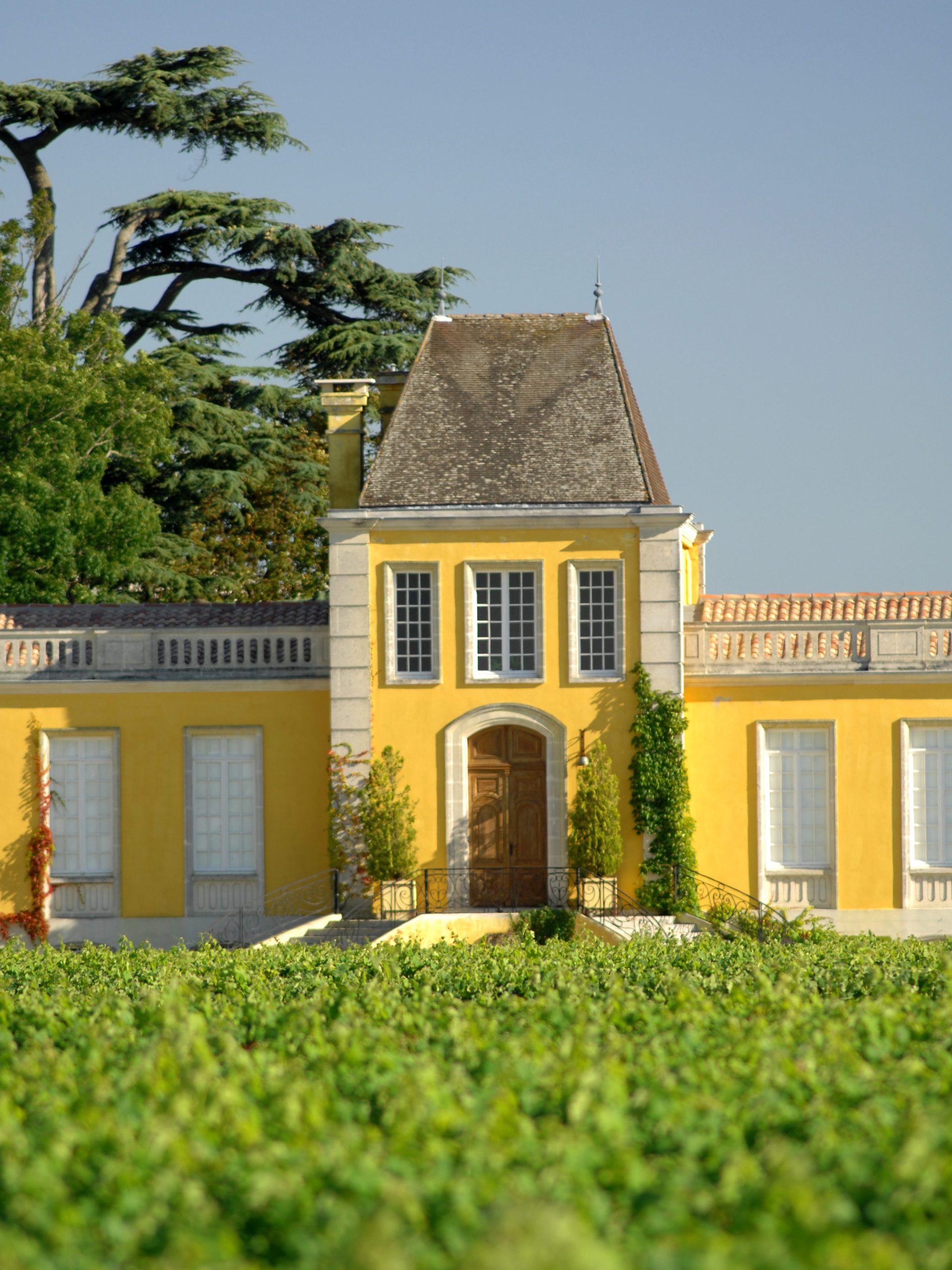
Photo Source: CIVB
Médoc
Located west of the Garonne river, the Left Bank encompasses the Médoc appellation of Bordeaux, which is best known for its red wine blends containing Cabernet Sauvignon, Cabernet Franc and Merlot. The Médoc is located just north of the city of Bordeaux.
Nestled between the Atlantic Ocean and the Gironde estuary, the region has a relatively warm and humid climate with ample sunlight and air circulation. The well-drained, gravel soils create the perfect environment for bold and structured wines.
The top sub-appellations within the Médoc region are named after villages. A few include:
- Margaux, with more classified growths than any other AOC
- Paulliac, home to three of five First Growths
- Saint-Julien, the smallest appellation in the Médoc
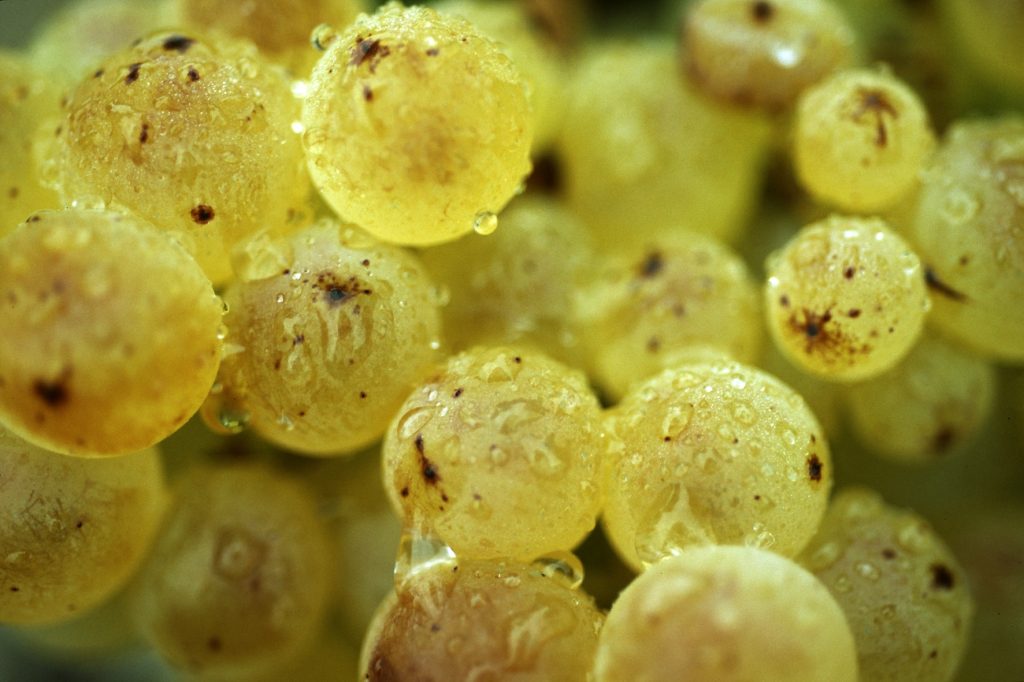
Graves & Pessac-Léognan
Moving south from the Médoc and just outside the southern reaches of Bordeaux city, the vineyards of Pessac-Léognan come into view. Pessac-Léognan is the newest appellation in Bordeaux, established in 1987 and known for reds, whites and sweet wines.
Directly south of Pessac-Léognan, the Graves appellation is named after its unique gravel soils, or “graves” in French. Also located in the Left Bank, its warm climate produces renowned Cabernet and Merlot blends with notes of red and black fruit. The region is also known for its dry white blends of Sauvignon Blanc and Sémillon—which are equally as respected as its reds.
Sauternes
Continuing to move south, we reach Bordeaux’s iconic sweet wine regions – the most well known being Sauternes. This sub-region’s unique microclimate of misty mornings and sunny afternoons create the perfect conditions for noble rot, producing elegantly sweet white wines by the same name.
Right Bank
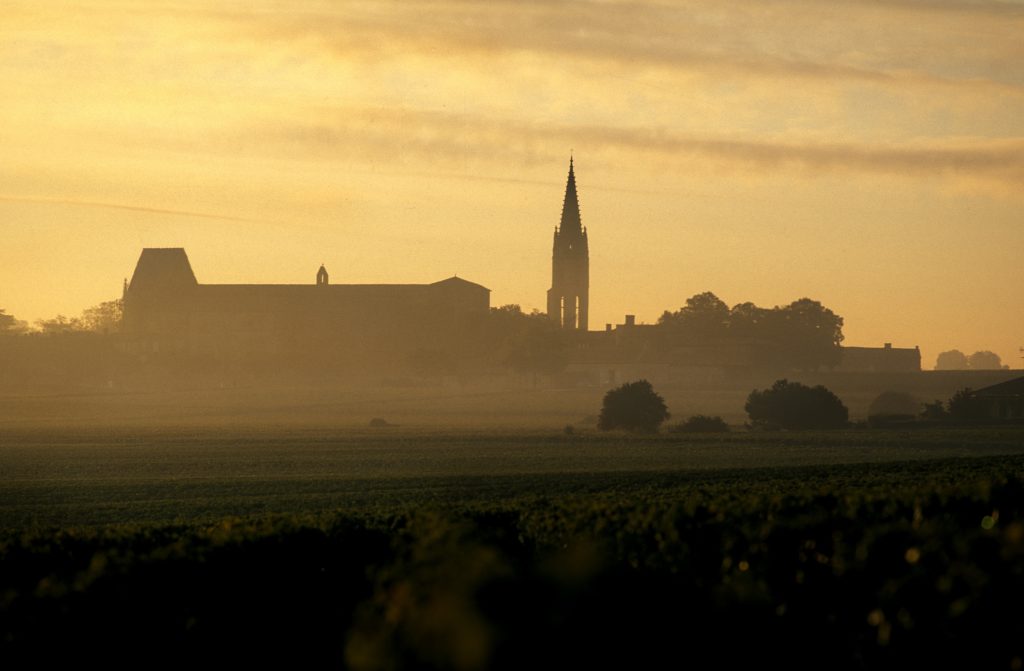
The Right Bank is located north and east of the Dordogne river and produces red blends most commonly featuring Merlot. The region’s clay and limestone soils and warmer weather produce wines with silky tannins that are ready to drink young but can also be aged.
Côtes de Bordeaux
Starting at the most northerly appellation, just across the Gironde estuary and opposite the Médoc, is Blaye Côtes de Bordeaux. The wines produced here are typically Merlot-dominant and approachable in their youth. Blaye is one of five Côtes de Bordeaux appellations, which are dotted around the Right Bank and united by hillside vineyards (côte means “hill” in French). Other well-known Côtes de Bordeaux appellations include:
- Cadillac
- Castillon
Pomerol
Moving south, Pomerol is the smallest of Bordeaux’s major fine wine regions and known for its Merlot. Notably, the region contains blue clay that holds water well and prevents grapes from ripening too quickly. This cooler soil and delayed ripening contribute to the notoriety of Pomerol’s Merlot.
Saint-Émilion
Directly south of Pomerol, Saint-Émilion is the oldest wine-producing appellation in Bordeaux. Saint-Émilion is not only known for producing a few of the world’s most famous Merlot-based wines but also produces age-worthy wines due to its vineyards on hillsides and plateaus as well as its gravel soil.
With 65 appellations in total, Bordeaux’s got a lot to offer—but don’t feel overwhelmed. The best way to find your favorite appellations is to try them out for yourself! Discover a tasting near you on our Events page to sip just a few of the delicious wines from Bordeaux.
Thirsty for more? Follow Clink Different’s Instagram and Facebook to stay up-to-date on the latest blogs and upcoming events.
